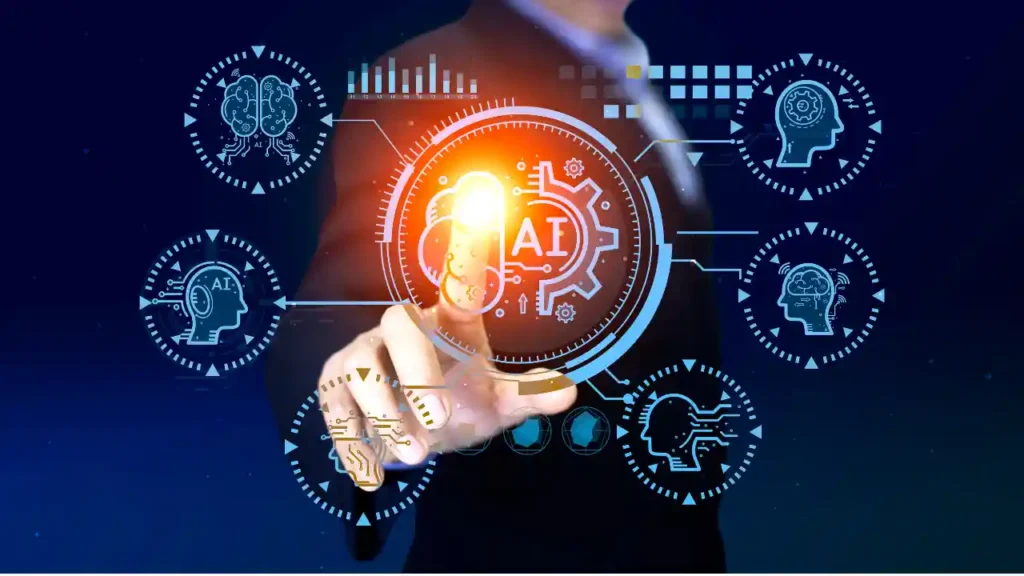Artificial intelligence (AI) refers to computer systems that are designed to perform tasks that normally require human intelligence. AI has progressed rapidly over the past few decades and has the potential to transform many industries and aspects of our daily lives.
What is Artificial Intelligence?
Artificial intelligence can be defined as intelligence demonstrated by machines to simulate cognitive functions associated with the human mind, such as learning and problem solving. The goals of AI include reasoning, knowledge representation, planning, learning, perception, motion, manipulation, creativity, general intelligence and more.
Some key capabilities of AI systems include:
- Learning from experience and large data sets
- Understanding and responding to natural language
- Reasoning and problem solving in complex environments
- Recognizing objects and sounds
- Making recommendations or decisions based on data
- Performing mechanical tasks with dexterity
Table of Contents
History and Evolution of AI
The foundations of AI arose in the 1950s, when scientists began exploring the possibility of machines processing intellectual capabilities similar to those of the human mind. Some key milestones in the history and evolution of AI include:
- 1943 – McCulloch and Pitts develop the first computational model of neural networks
- 1950 – Turing Test proposed for evaluating machine intelligence
- 1956 – Term “artificial intelligence” coined at Dartmouth Conference
- 1997 – IBM’s Deep Blue defeats world chess champion Garry Kasparov
- 2011 – IBM’s Watson wins Jeopardy! using natural language processing
- 2014 – Facebook begins work on intelligent chatbots
- 2016 – AlphaGo program beats human Go champion; rapid advances in computer vision and deep learning
Today, AI has progressed significantly and has succeeded in narrow applications such as chess, Go, self-driving vehicles, language translation, facial recognition, and more. The ultimate goal is developing “general AI” – systems that exhibit human-level intelligence and can master multiple cognitive skills.
Types of Artificial Intelligence

There are several types of AI, generally categorized based on their intended functionality and capabilities. Some major AI categories include:
1. Artificial Narrow Intelligence (ANI)
Also known as “weak AI,” ANI systems are programmed to perform singular, dedicated tasks extremely well, such as playing chess, translating languages, self-driving capabilities, speech recognition, and more. ANI excels at specific tasks, but lacks generalized intelligence.
2. Artificial General Intelligence (AGI)
AGI, also known as “strong AI,” would possess more generalized cognitive abilities and human-level intelligence. AGI systems do not yet exist, but the goal is to develop self-aware machines capable of reasoning, knowledge representation, learning, and more to function autonomously in complex environments.
3. Artificial Superintelligence (ASI)
ASI refers to hypothetical AI that significantly surpasses human-level general intelligence and cognitive capabilities. ASI is mostly theoretical at this point and is a long-term AI goal that poses ethical issues if achieved.
How AI Works
AI and machine learning algorithms enable computers to perform tasks and make decisions by learning from data, rather than through explicit programming. Here are some of the main approaches used in AI:
Machine Learning
Machine learning algorithms analyze large data sets to detect patterns, learn from experience, and progressively improve at completing tasks without explicit programming. Popular techniques include supervised, unsupervised, semi-supervised, and reinforcement learning.
Deep Learning
A subset of machine learning composed of artificial neural networks with multiple abstraction layers. Enables computers to solve more complex problems such as computer vision, speech recognition, and natural language processing. Inspired by the neural networks of the human brain.
Natural Language Processing (NLP)
Enables computers to understand, interpret, and generate human languages including speech recognition, language translation, and more. NLP extracts meaning and intent from text, allowing interfaces between computers and people via voice commands or typed questions.
Computer Vision
Enables computers and systems to derive meaningful information from digital images, videos, and other visual inputs and take actions or make recommendations based on visual data.
Applications of AI
Artificial intelligence has a vast range of applications across industries and aspects of daily life. Here are some major AI application categories:
Healthcare
Detect diseases, recommend treatments, develop drugs, perform robotic surgeries, monitor patients, and more.
Business
Personalize marketing, predict customer trends, optimize supply chains, augment human resource tasks, and more.
Transportation
Self-driving vehicles, intelligent traffic systems, smart city planning, aerospace, logistics and shipping.
Cybersecurity
Advanced threat detection, malware prevention, secure authentication, automated vulnerability testing, and more.
Finance
Algorithmic trading, fraud prevention, risk assessment, quantitative analysis, financial advisory, personal finance.
Manufacturing & Industrial Automation
Intelligent robots, predictive maintenance, automated production, quality control.
The Future of AI
AI adoption is accelerating rapidly. As algorithms become more advanced and computing power grows, AI will impact virtually every industry. Future advancements may include:
Advances in Specific Applications
Steady improvements in existing applications like computer vision, NLP, recommendations, and scientific computing.
Artificial General Intelligence (AGI)
Development of AGI could enable systems to perform intellectual tasks across many domains. The feasibility, timeframe, and implications of AGI remain uncertain.
Augmenting Human Intelligence
Rather than autonomous systems, AI could continue providing key insights and recommendations to human experts and decision makers. Human–AI collaboration can amplify cognition.
Read More:
Artificial Intelligence (AI): Exploring Its Origins, Functions, Types, & Uses
Explore the Google Local Guide Program, Benefit & Earning
FAQs
FAQs of Artificial Intelligence (AI)
What exactly is Artificial Intelligence (AI)?
AI refers to computer systems designed to perform tasks that typically require human intelligence. These systems can learn, reason, solve problems, understand natural language, and more.
How does AI differ from human intelligence?
AI replicates certain human cognitive functions, like learning and problem-solving, using algorithms and data. However, it doesn’t possess human emotions, consciousness, or intuition.
What are the main capabilities of AI systems?
AI systems can learn from data, understand natural language, solve complex problems, recognize objects and sounds, make decisions based on information, and perform physical tasks.
What’s the history of AI?
AI’s foundations were laid in the 1950s. Over time, it evolved through milestones like the development of neural networks, the Turing Test, and more recent achievements in games and language processing.
What are the types of AI?
AI is categorized into Artificial Narrow Intelligence (ANI), which specializes in specific tasks, Artificial General Intelligence (AGI) aiming for human-like intelligence, and the theoretical Artificial Superintelligence (ASI) surpassing human capabilities.
How does AI work?
AI uses algorithms and data to learn patterns and make decisions. Techniques like machine learning, deep learning, natural language processing, and computer vision drive AI’s functionalities.
What are some applications of AI?
AI is used in healthcare for diagnostics and treatments, in business for personalized marketing, in transportation for self-driving vehicles, in cybersecurity for threat detection, and across various other sectors.
Is AI a threat to jobs?
AI might change the nature of jobs, automating certain tasks while creating new opportunities that require human skills like creativity and problem-solving.
Are there ethical concerns with AI?
Yes, AI raises ethical concerns about data privacy, bias in algorithms, job displacement, and the responsible development of powerful AI systems.
Conclusion
From narrow AI applications to the theoretical possibilities of artificial general intelligence, artificial intelligence has made rapid leaps in recent years. As algorithms and data sets continue improving, AI adoption will accelerate across industries. Like other transformative general purpose technologies, AI raises important questions around ethics, security, privacy, the future of work and more that technologists, policymakers and societies will need to grapple with responsibly in the coming years.







5 thoughts on “Artificial Intelligence (AI): Exploring Its Origins, Functions, Types, & Uses”